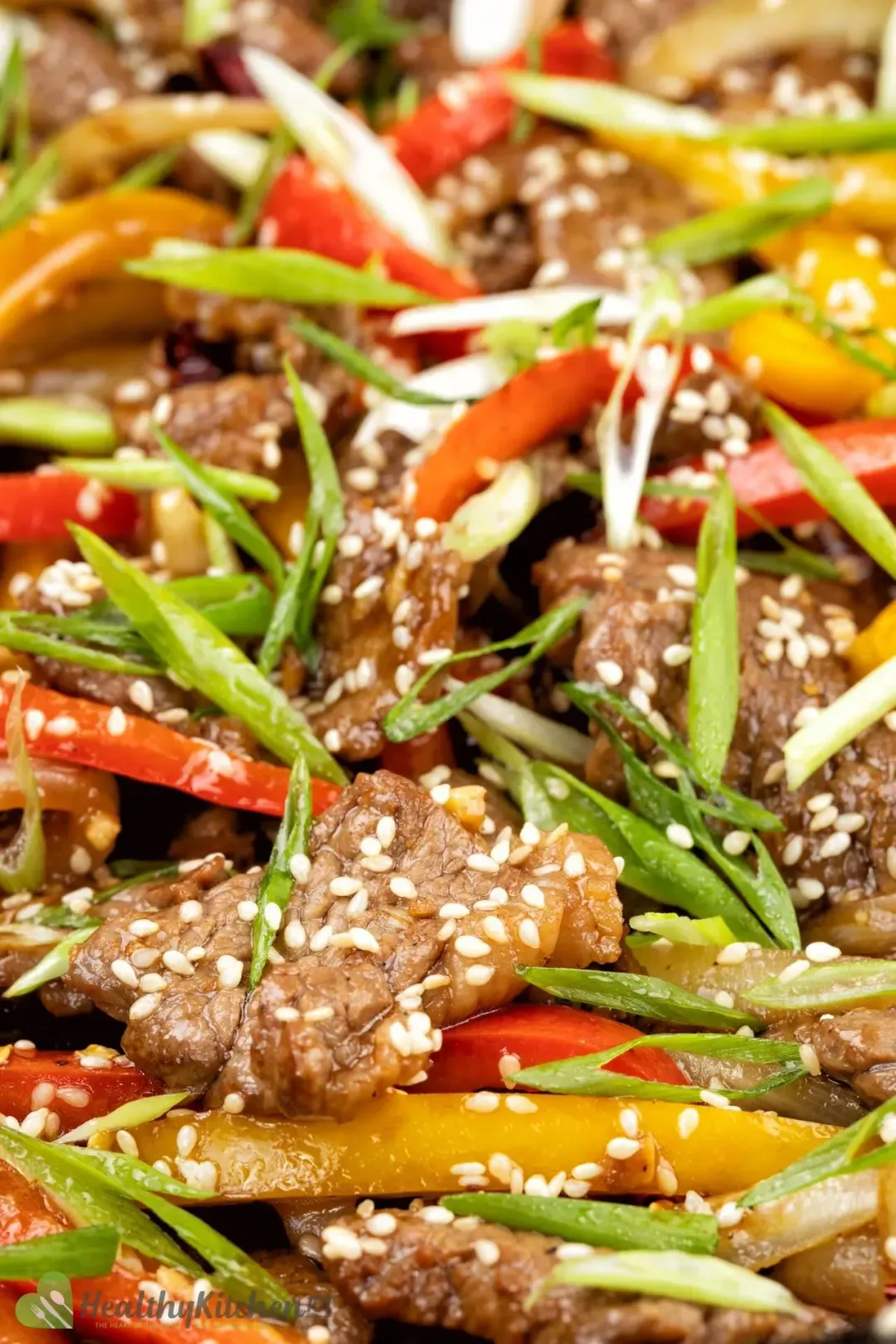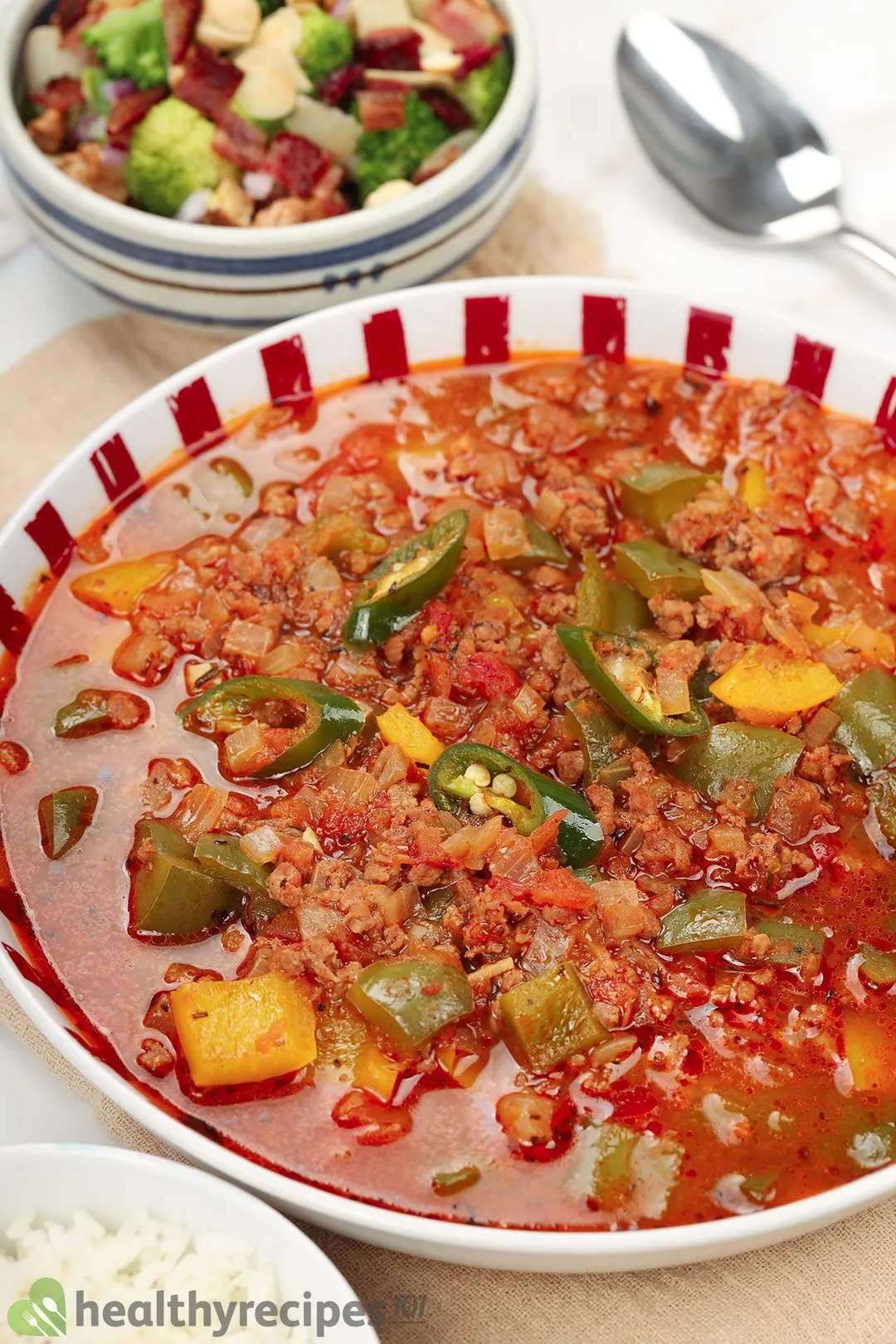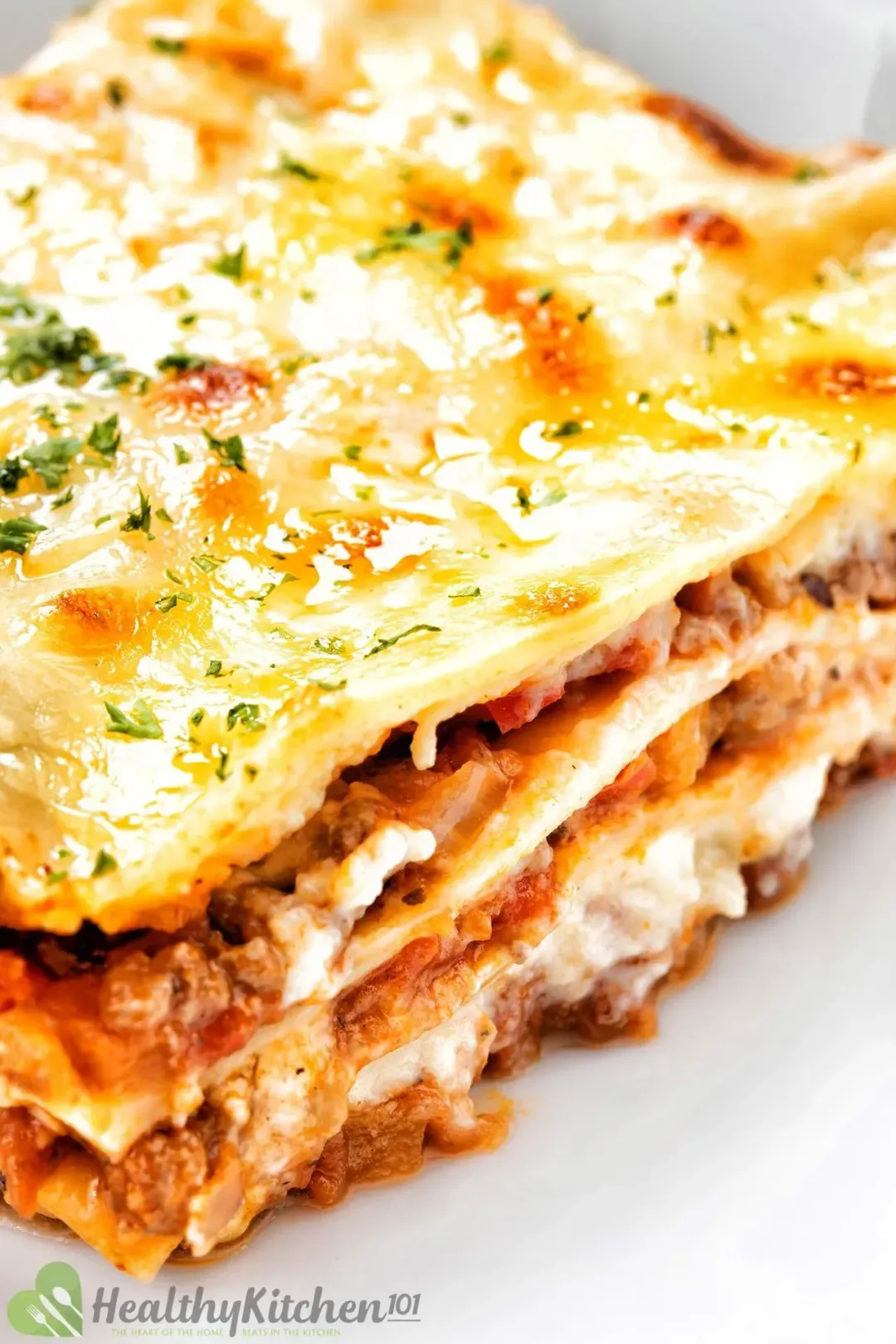This pepper steak recipe is straightforward with only a handful of ingredients. You’ll be surprised at how simple it is to make!
There’s a common misconception about Chinese food that it’s all complex with lots of rare ingredients. This makes people think it’s too complicated for home cooks to make.
Today we are going to prove otherwise! Not only are we going to make it simpler, but also a lot healthier. Rest assured that the flavor will still be delicious.
Your days of greasy Chinese takeout are coming to an end. Let’s get started!
What Is Chinese Pepper Steak Made Of?
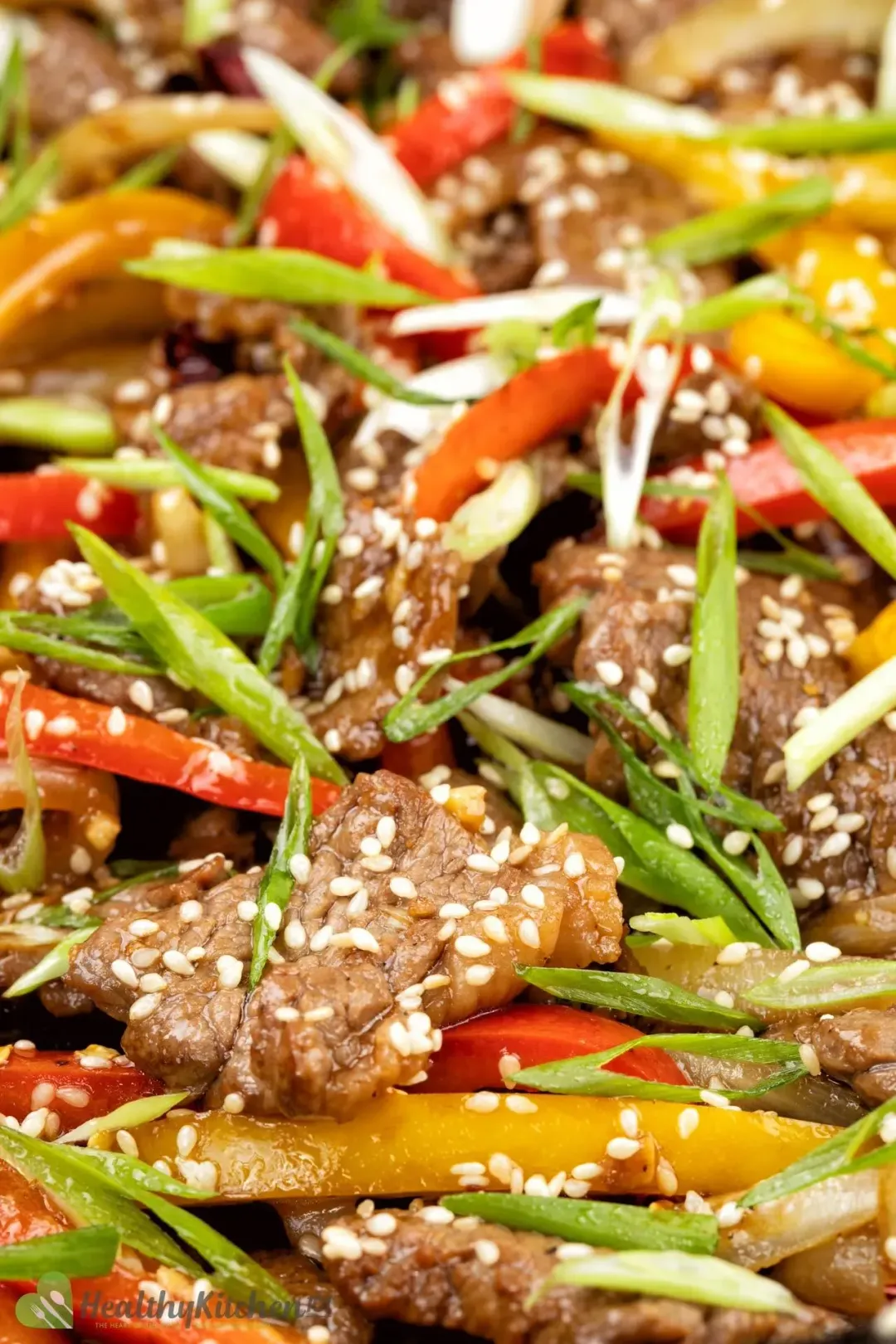
Pepper steak mainly consists of thinly sliced beef and bell peppers. The common cooking method is stir-frying. Here are a few things that determine pepper steak’s flavor profile:
Savoriness: this can vary depending on the chef. But when it comes to Chinese cuisine, some common ingredients are soy sauce and oyster sauce.
To intensify the savoriness, chefs also use ginger, garlic, and spring onions or scallions.
Sweetness: honey or brown sugar are the most popular options as they give the dish a beautiful caramel color.
Most of these ingredients will appear in our pepper steak recipe. But you don’t have to follow it strictly.
Think of our recipe as a guide and foundation to build upon when creating your own pepper steak extravaganza.
Why Cook Beef Pepper Steak with Onion?
Onion is one of the most common ingredients in the world.
As for why onions always go with stir-fried dishes, we can think of a few reasons.
Stir-frying technique requires cooking food on high heat in a heavy-duty skillet— usually a wok or cast iron skillet. When you add onions to the skillet, its surface is lightly charred, giving it a distinct roasted flavor.
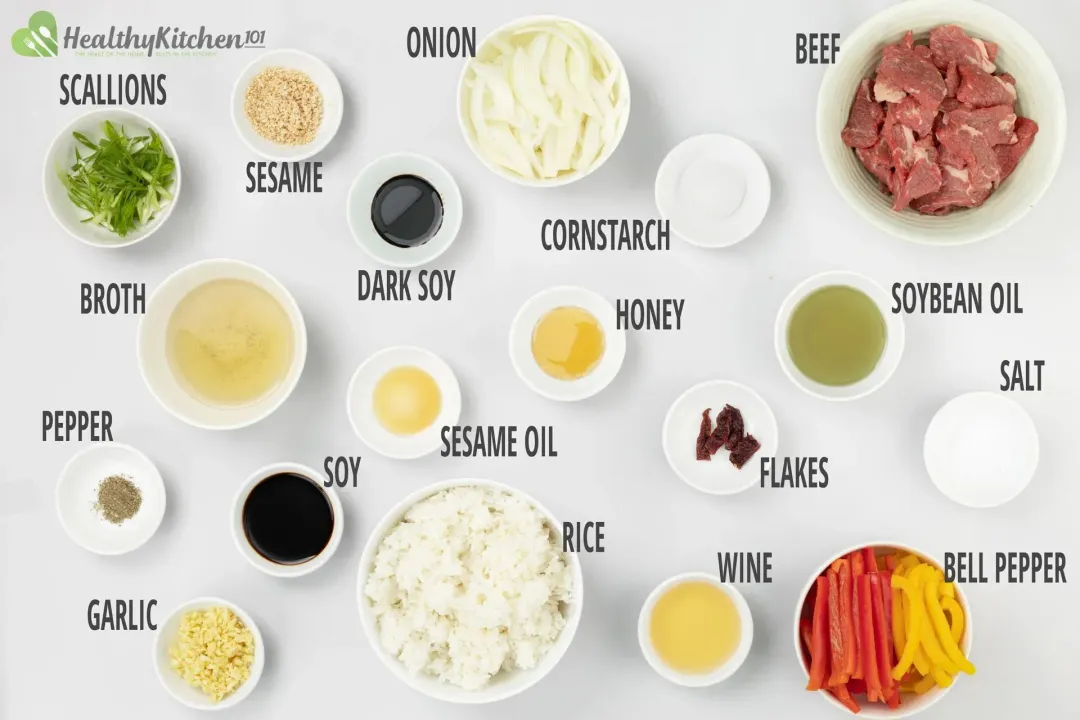
In addition, when you cook onions, you bring out their signature sweet taste. The sweetness adds a nice contrast to a savory dish and gives it another dimension.
And, you can cook onions until completely tender and caramelized. Or, you can add crunch with it slightly undercooked with a hint of peppery taste, yet still sweet and charred.
Simply put, onions are the most versatile ingredient that go well with any food.
Types of Onions
- White onions: as the name suggests, these onions have a white peel on the outside. They tend to be pungent— perfect for those who love a peppery hint in salads.
- Yellow onions: they are the most versatile and go well with any recipe. They can be less pungent, and sweeter than white onions.
- Sweet onions: if you’re planning to make deeply caramelized onions, sweet onions are your best bet. They also go well in salads and pickled foods.
- Red onions: with their mesmerizing purple color, red onions add a nice contrast of color in any dish. You can have them raw or cooked in salads, relishes, or for grilling.
Is This Recipe Healthy?
Yes, this recipe is healthy for you. Here’s why:
Since we limit the use of oil, the amount of saturated fat in this recipe is 4 grams per serving. This is relatively low for a stir-fry dish.
High consumption of saturated fatty acids can lead to high blood cholesterol levels. This may result in an increased risk of cardiovascular diseases.
We recommend a diet low in saturated fats to improve your blood cholesterol levels and heart health. You can start by cutting down on the use of oil, as we do for today’s recipe.
In addition, thanks to all those bell peppers, our pepper steak recipe is packed with lots of micronutrients. It also contains 77mg of vitamin C, which is about 93% of your recommended daily intake.
The human body cannot produce vitamin C and the only way for us to get it is through food. We primarily think of vitamin C as an immune booster, but it does so much more than that.
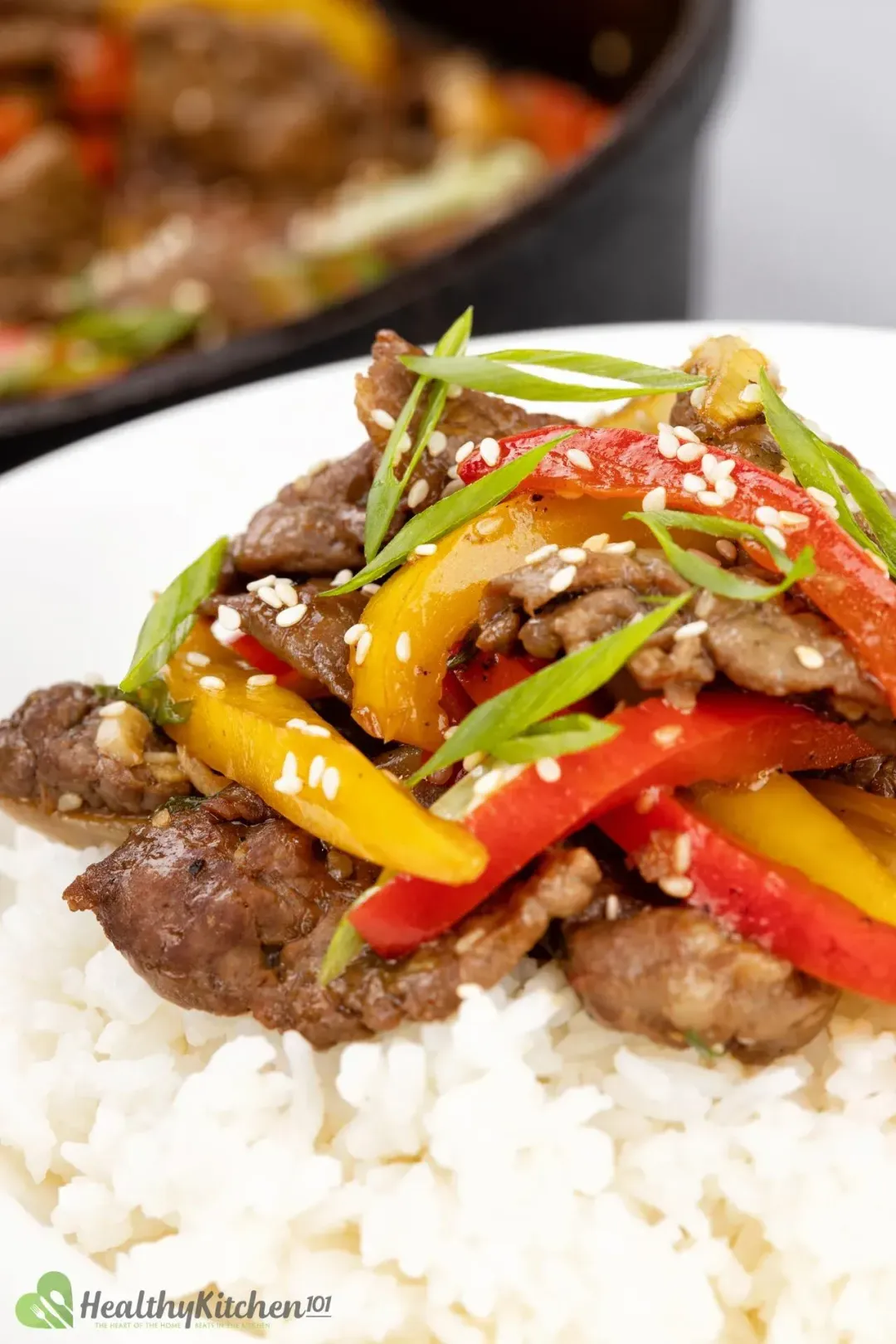
If you want to know why it’s so important, here is a detailed article about vitamin C.
Pepper Steak and Rice
Rice is an important agricultural commodity with the highest consumption in Asian countries.
In Chinese cuisine, rice is not just a food staple, but also a valued tradition. If there’s one thing that always appears in a Chinese person’s everyday meals, it’s rice.
And since our pepper steak is a Chinese-inspired recipe, it would only be right to serve it with rice.
Types of Rice
Rice can be very diverse and suit different recipes. Here are some types of rice you can use for this dish:
- Jasmine rice: is a type of long-grain white rice and commonly used in Southeast Asian cuisine. It has a distinctive scent of jasmine flower and delicately soft texture— perfect for any Asian-style dish.
- Japonica rice: this short-grain, mildly sweet, white rice is popular in Chinese, Japanese, and Korean cooking. If you cannot find it, any type of sushi is a good alternative.
- Brown rice: is a type of whole-grain rice with a nutty, roasted flavor and lightly firm, chewy texture. Not only is it tasty, this fibrous rice can bring you many health benefits as well.
- Black rice: also known as “The Forbidden Rice”, this whole-grain has a similar texture and flavor profile to brown rice. However, black rice is more complex with a nuttier taste and more chewy texture.
If you’ve never tasted any of these types of rice, now is a good time to give them a try.
Or, if you love rice, our Mongolian beef recipe is another perfect dish to pair with it.
What Do You Serve With?
Since our main dish is protein-rich, we only need a simple side dish and beverage to make a wholesome meal. We recommend pairing it with winter melon meatball soup and pomegranate blueberry juice.
Since the winter melon meatball soup is both light and comforting, it would make a perfect side dish.
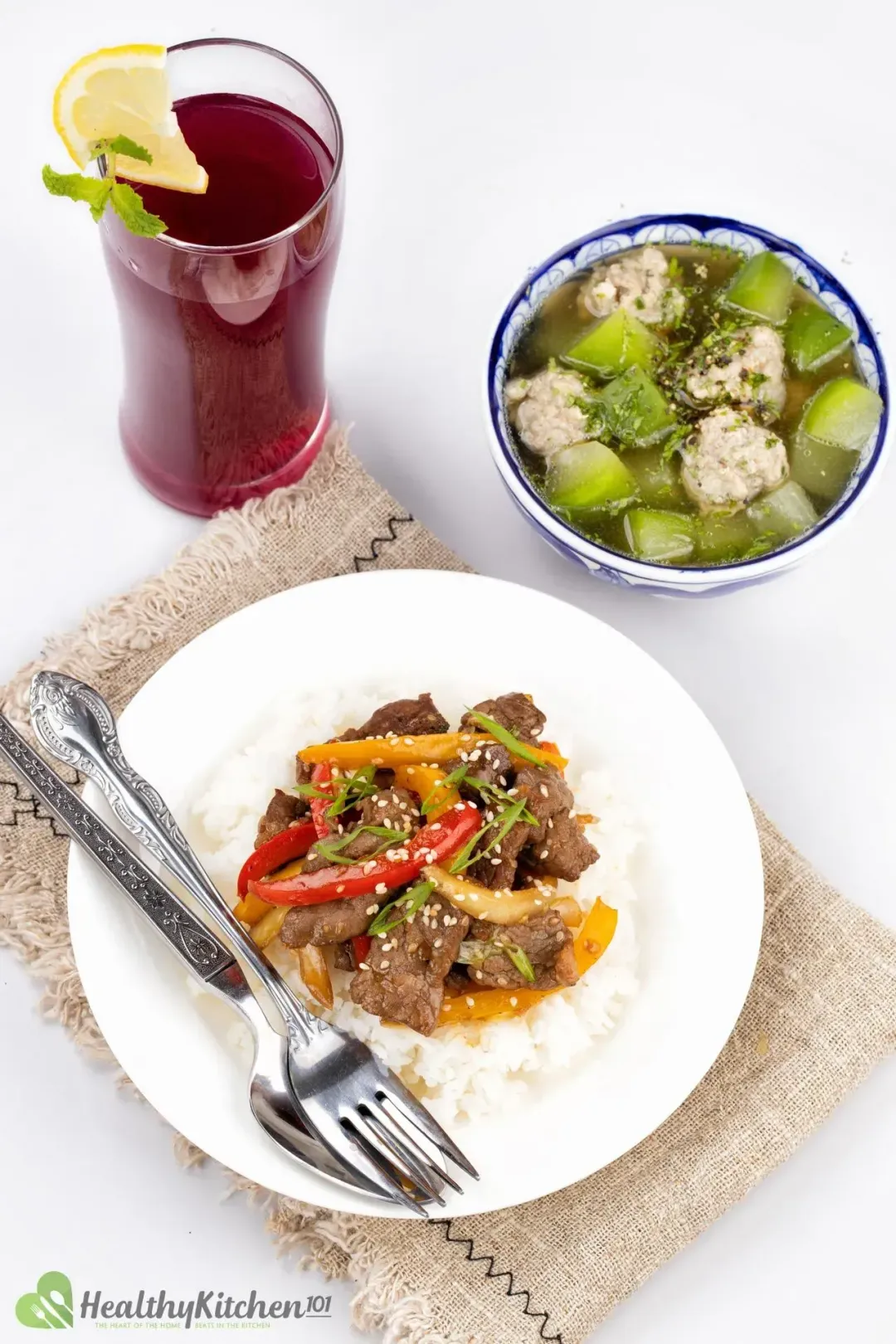
Combine the soup and pepper steak and you will have a delicious homemade Chinese dinner at home. Finish it off with a refreshing glass of pomegranate blueberry juice on ice.
Discover the Ultimate Beef Stir-fry Recipes to Satisfy Your Cravings
This article provides a step-by-step guide on how to make a delicious and authentic beef chow fun dish, which is a staple in Cantonese cuisine. The recipe uses simple ingredients and can be prepared in under 30 minutes, making it a great option for busy weeknights.
Beef chow mein is a popular Chinese dish that consists of stir-fried noodles, tender strips of beef, and a variety of vegetables. This recipe is easy to customize to your liking, and can be made in under 30 minutes for a quick weeknight dinner.
For those who relish the taste of beef stir-fry dishes and crave more, peruse our collection of equally mouth-watering recipes below.
Pepper Steak Recipe
This pepper steak recipe is one of our favorite Chinese recipes. It comes together in only a few minutes, and unlike those greasy takeouts, this one is fresh and healthful. Don't be surprised if it tastes just as good as the restaurant's (or even better!)
- cook TIME 5 mins
- prep TIME 5 mins
- total TIME 25 mins
- INACTIVE TIME 15 mins
- COURSE Main Course
- CUISINE Asian, Chinese
- SERVINGS servings
- CALORIES 467 kcal
INGREDIENTS
- 12 oz lean striploin (thinly sliced)
- 2 tbsp garlic (minced, divided)
- 1/4 tsp salt (divided)
- 1/4 tsp black pepper (divided)
- 5 1/2 tsp reduced sodium soy sauce (divided to 1 tbsp and 2 ½ tsp)
- 1 tsp dark soy sauce (divided)
- 3 tbsp soybean oil (or vegetable oil, divided)
- 8 oz bell peppers (yellow and red, cut into strips)
- 4 oz yellow onions (thinly sliced)
- 2 tbsp white wine (optional)
- 1/3 cup unsalted chicken broth
- 1 tbsp cornstarch
- 1 tsp honey
- 1 oz fresh scallions (thinly sliced)
- 1/2 tbsp white sesame seeds (roasted, plus more to garnish)
- 1 tsp red pepper flakes (optional)
- 1/2 tsp sesame oil
- 3 cups cooked medium-grain rice
INSTRUCTIONS
Prep
Marinate the beef: In a big bowl, marinate the 12 oz beef with 1 tbsp minced garlic, 1/8 tsp salt, 1/8 tsp black pepper, 1 tbsp reduced sodium soy sauce, and 1/2 tsp dark soy sauce. Cover and let sit for 15 minutes at room temperature.
Cook
Cook the vegetables: In a cast iron skillet, heat 1 1/2 tbsp soybean oil over high heat. Add 8 oz sliced bell peppers and 4 oz yellow onions, and stir fry for 2 minutes or until just tender. Add 1 tbsp minced garlic and 1/8 tsp salt. Stir for 30 seconds or until fragrant. Remove to a plate and set aside.
Stir-fry the beef: Turn the heat to high. Add 1 1/2 tbsp soybean oil to the same skillet. Add the marinated steak to the skillet and stir fry for 30 seconds. Add 2 tbsp white wine and cook for 10 seconds, allowing the alcohol to evaporate. Turn off the heat. Transfer to a plate and set aside.
Make the sauce: Add 1/3 cup chicken broth, 1 tbsp cornstarch, 2 1/2 tsp reduced sodium soy sauce, 1/2 tsp dark soy sauce, and 1 tsp honey. Mix well to dissolve. Cook for 30 seconds. Return the vegetables and beef to the pan. Add 1 tsp red pepper flakes and stir. Then add 1 oz scallions, 1/2 tbsp roasted sesame seeds, and the remaining 1/8 tsp black pepper. Turn the heat to high and stir vigorously to combine all ingredients.
Turn off the heat. Add 1/2 tsp sesame oil. Give everything a final mixing.
Plating: Transfer the beef to a plate or a bowl. Serve with cooked rice. Garnish with a sprinkle of roasted sesame seeds.
NUTRITION
Tuyet Pham
Head Chef, Culinary ConsultantLuna Regina
Writer, AuthorLizzie Streit, MS, RDN, LD
Nutrition Reviewer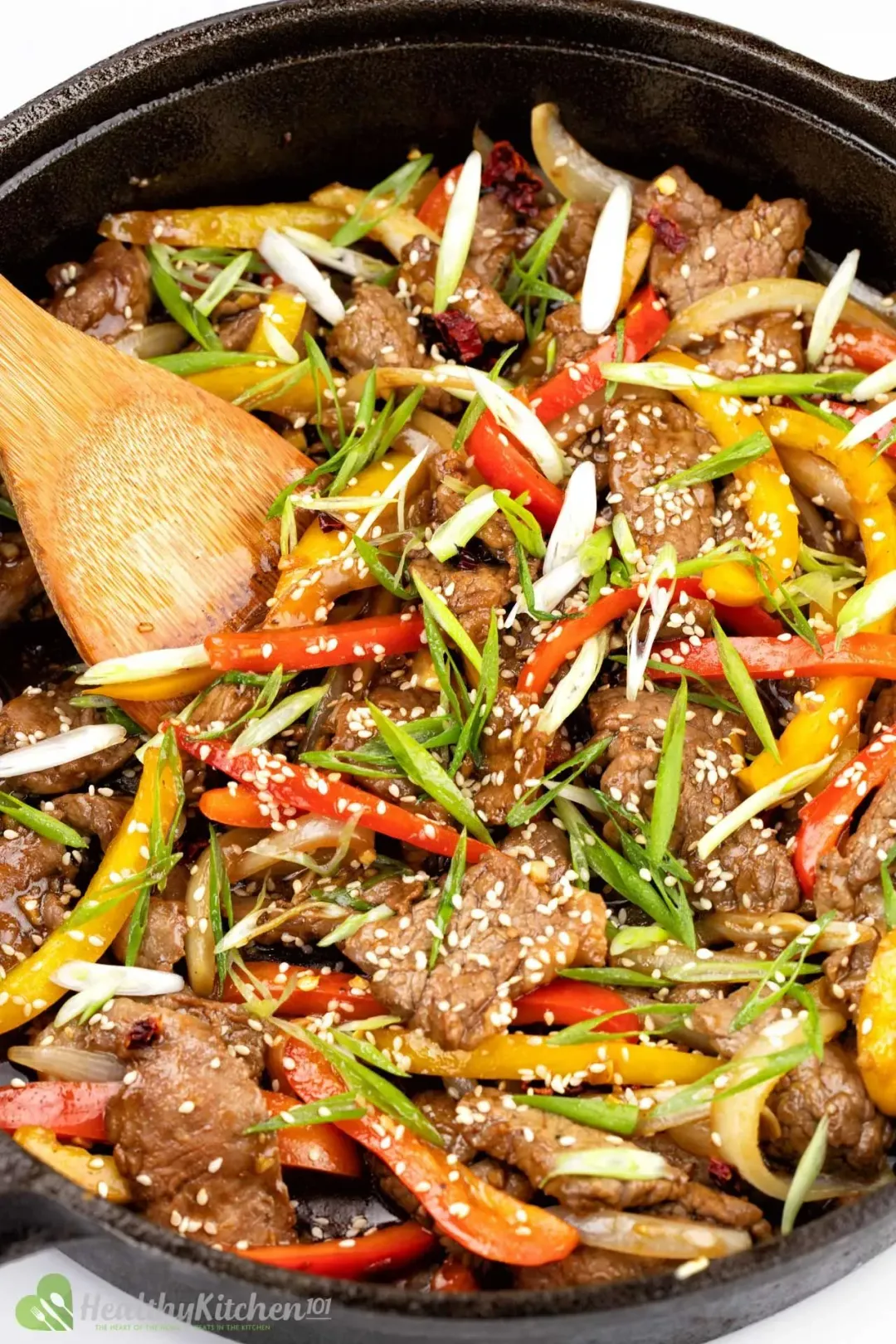
- Carrie
This was such a tasty addition and I’ll have no problems fitting it into my Webnesday dinners 😉
- Maides KeaneFantastic. It was really good.
